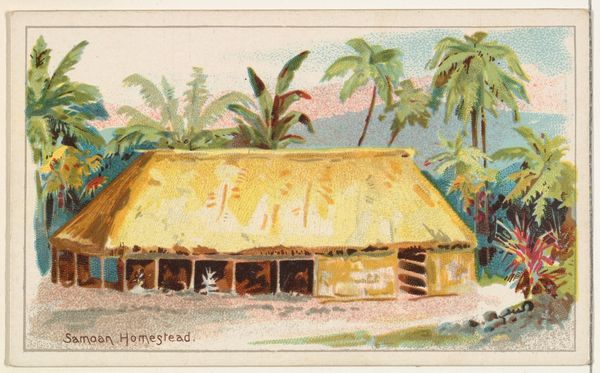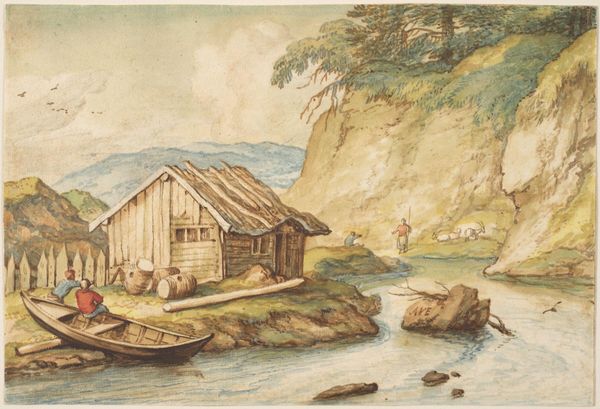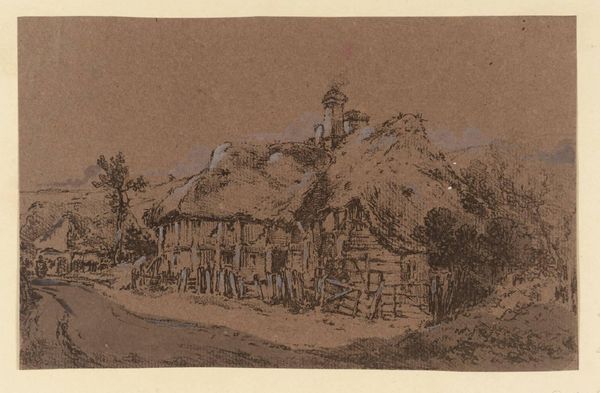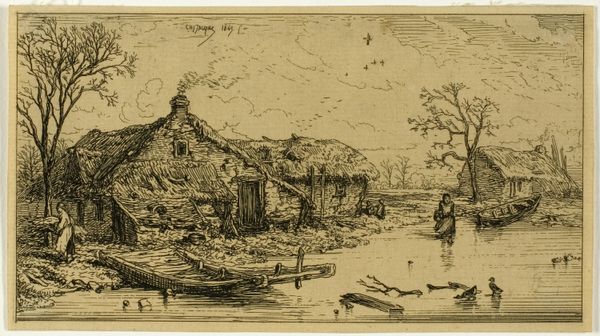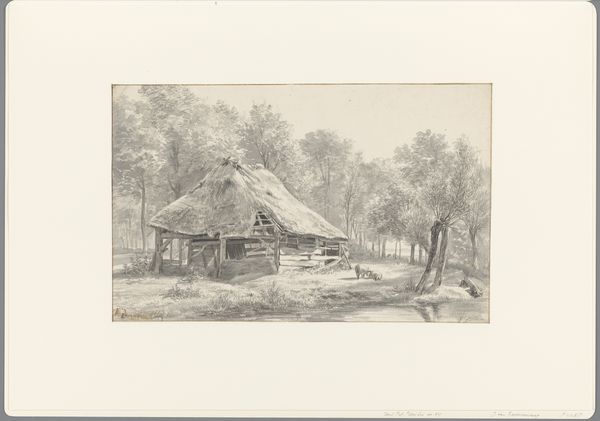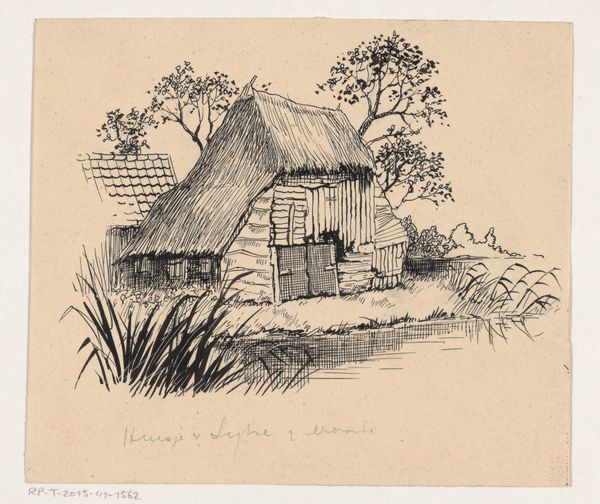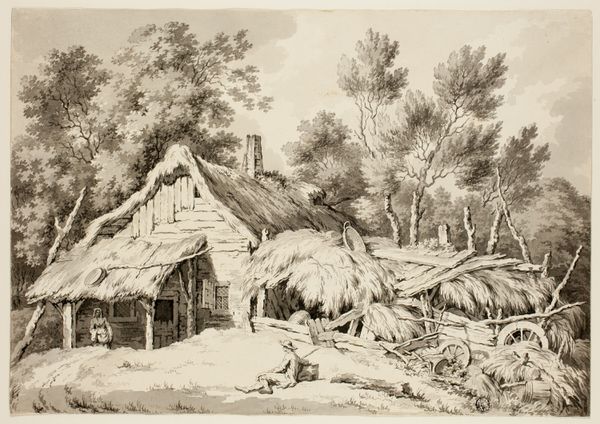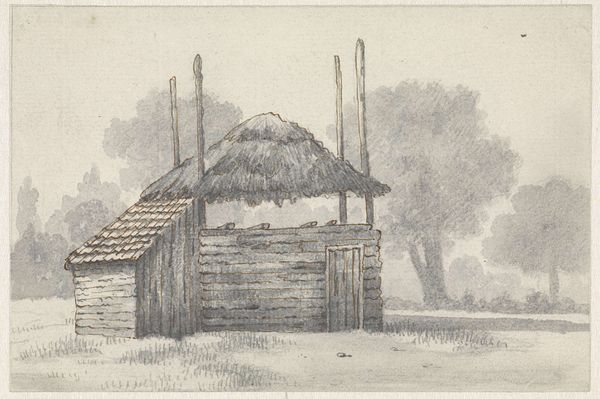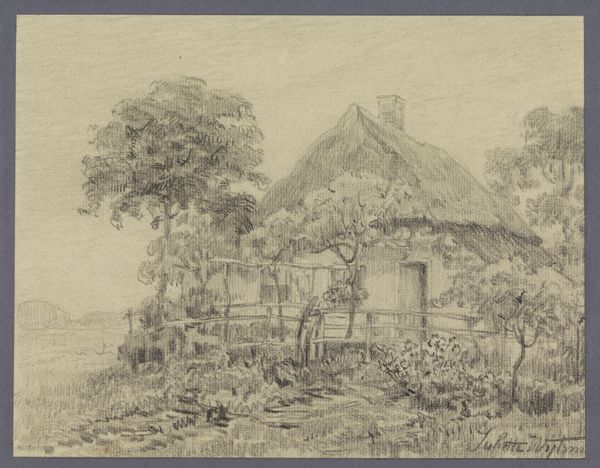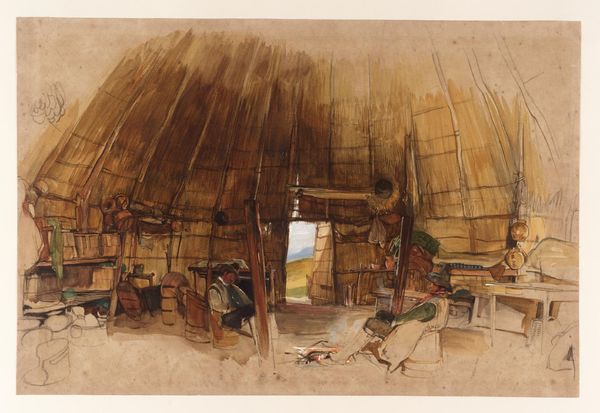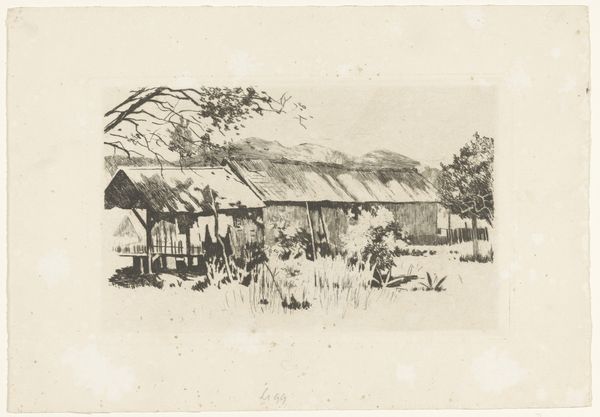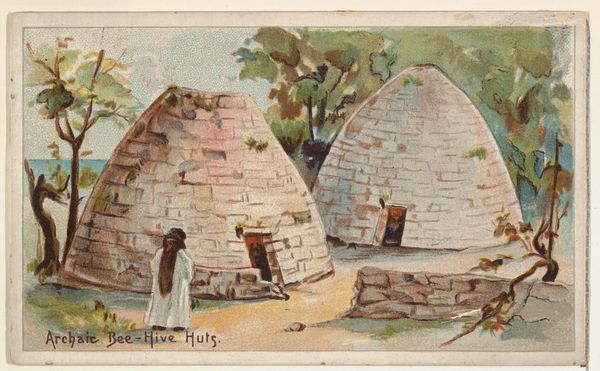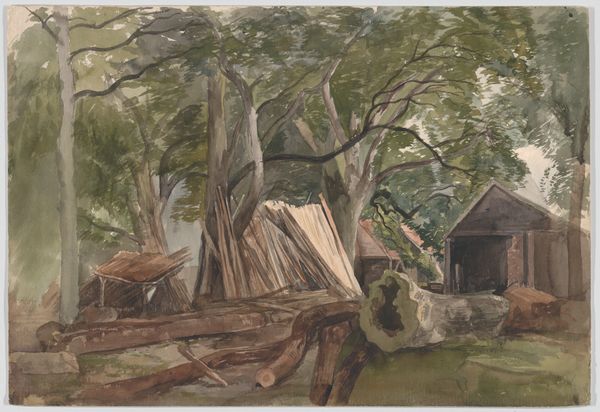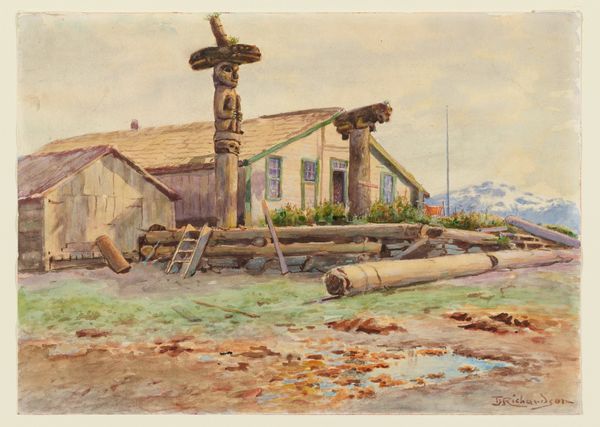
Palmetto House, from the Habitations of Man series (N113) issued by W. Duke, Sons & Co. to promote Honest Long Cut Smoking and Chewing Tobacco 1890
0:00
0:00
drawing, lithograph, print, architecture
#
drawing
#
lithograph
# print
#
landscape
#
genre-painting
#
architecture
Dimensions: Sheet: 2 1/2 × 4 1/8 in. (6.4 × 10.5 cm)
Copyright: Public Domain
Editor: So, here we have “Palmetto House” a lithograph and drawing from 1890 by The Giles Company, part of the “Habitations of Man” series for W. Duke, Sons & Co. tobacco. It's quite charming, almost like a scene from a storybook. I’m struck by its naivety and the warm colors. How do you read this piece? Curator: Charming indeed, it whispers a tale of simplicity and connection with nature, doesn't it? The artist, or artisan rather, captures a slice of life. But look closer—it's also selling you something. Does knowing that this was essentially advertising shift your perception? Perhaps it becomes less about idyllic rural life and more about…well, aspiration? Editor: That’s a sharp point! I hadn't considered that beyond the obvious. Suddenly, it feels less spontaneous, and more like a carefully constructed image designed to evoke…desire. Curator: Precisely! It makes you wonder who the target audience was, and what kind of "Honest Long Cut Smoking and Chewing Tobacco" they were trying to associate with this scene. It’s intriguing, isn’t it, how commerce inserts itself into art, shaping not just our desires but also how we perceive simpler lives. Does it make you think of modern marketing techniques at all? Editor: It does! This feels like a vintage version of lifestyle branding. The image definitely clashes with our contemporary notions of how we perceive commercial imagery, in an ironic way. Curator: I agree. The line is blurred between reality, representation, and the seductive power of commerce. The artwork challenges what we'd call fine art but shows an interesting story about how marketing affects perceptions of how we envision an aesthetic existence. Editor: This conversation definitely changed my perception of this drawing and print. Thanks for pointing out that the advertising angle is important to our analysis.
Comments
No comments
Be the first to comment and join the conversation on the ultimate creative platform.
